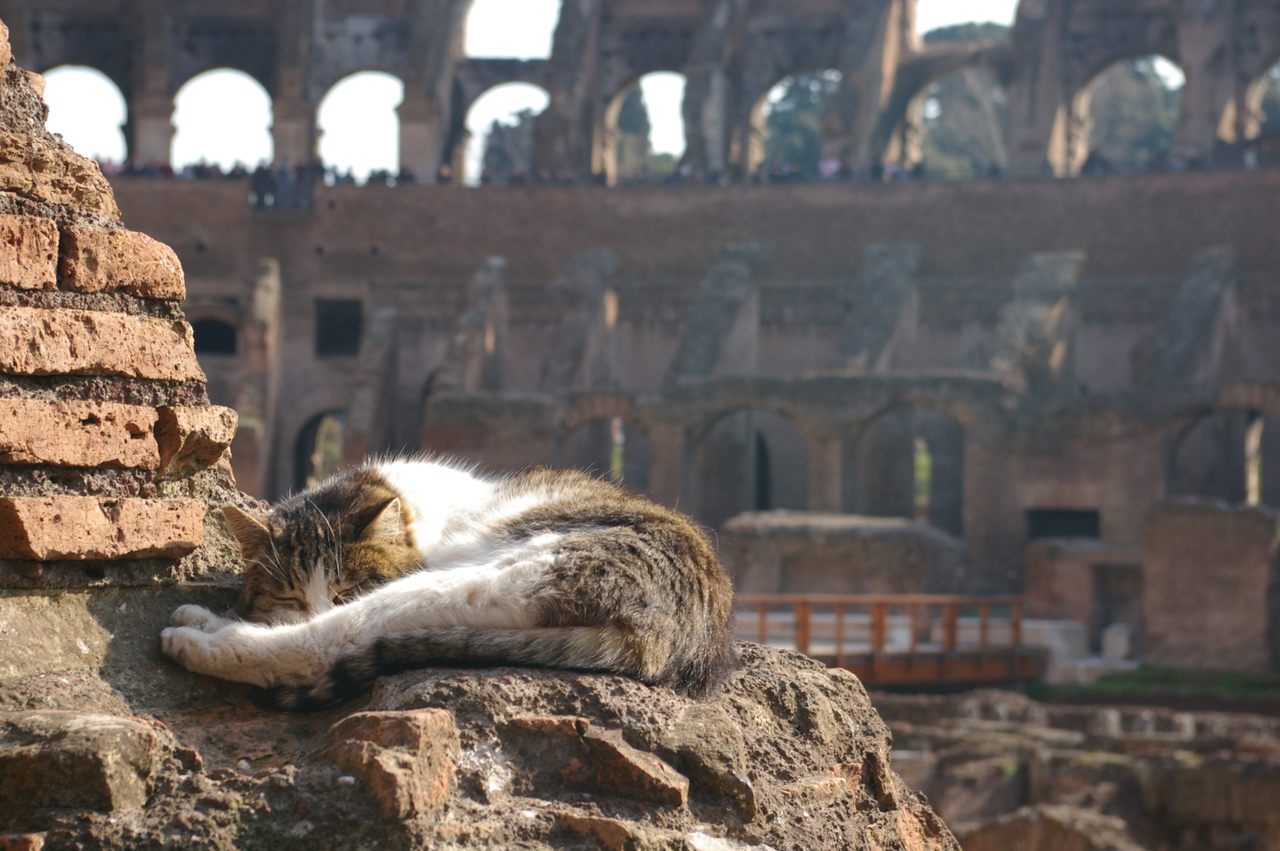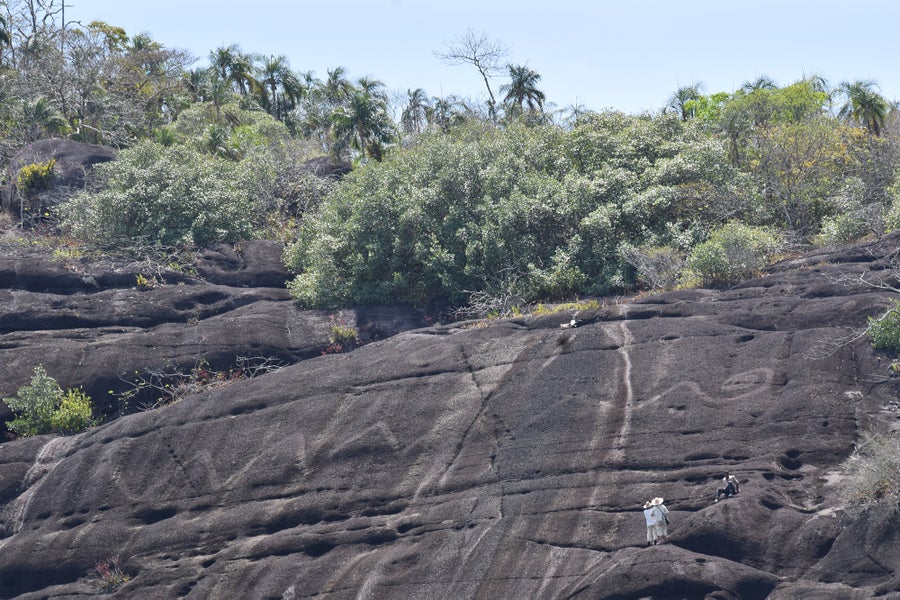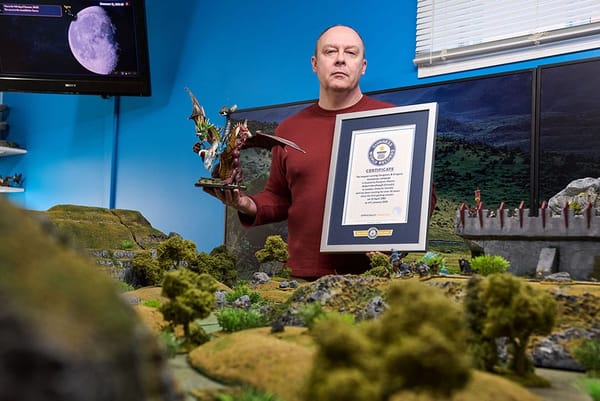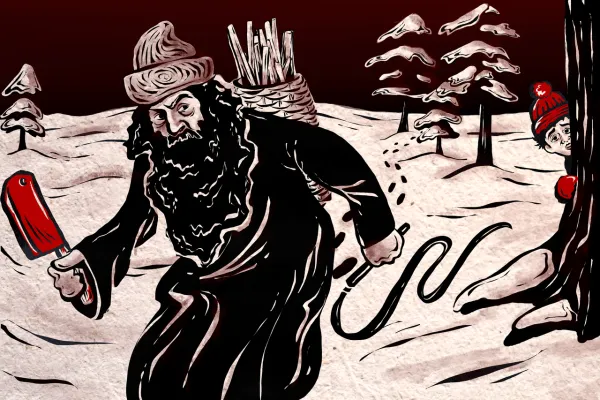The extraordinary survival story of ultra runner Mauro Prosperi

From Historic Flix: "Mauro Prosperi, a former police officer from Italy, is a seasoned ultramarathon runner. His hobby saw him enter the Marathon des Sables in 1994, an annual six-day ultramarathon that takes participants through over 150 miles of scorching Moroccan desert. For their whole week in the desert, competitors have to carry all their own equipment and food and are penalized for exceeding their designated rations. They also have a minimum pace of 3 kilometers per hour. Mauro’s passion for adventure would end up taking him on an unexpected journey for survival – during this time, he had no food, water, or any idea of which way to head for help. He wandered the vast and inhospitable desert alone for more than a week, was forced to drink his own urine to stay alive, and was eventually found 180 miles from the race course."
Buffalo Calf Robe Woman was a Cheyenne warrior who probably killed Custer

From Mental Floss: "For the Native Americans of the Northern Plains, the Battle of Little Bighorn was a glorious victory against U.S. government forces intent on claiming their land. Fought on June 25, 1876, in Montana Territory, the battle saw Lakota Sioux, Northern Cheyenne, and Arapaho warriors quickly overwhelm and kill some 260 U.S. troops. George Armstrong Custer, the Civil War hero sent to remove the Native Americans to their reservations, was among them. Though the exact circumstances surrounding Custer’s death have long been the subject of debate, a new and intriguing account of his final moments surfaced in June 2005 when members of the Northern Cheyenne broke more than a century of silence to recount their tribe’s oral history of the battle. According to their account, it was a female fighter named Buffalo Calf Road Woman who knocked Custer off his horse that day, leaving him vulnerable, and who may have killed him."
Egyptians weren't the first to domesticate cats, the cavemen were

From Atlas Obscura: "Domestic cat bones around 8,000 years old have recently been found in both Serbia and Poland. This pushes back the arrival in Europe of one of humanity’s earliest companion animals by several thousands of years. Until recently, the thinking was that cats arrived in Europe only in Late Antiquity (roughly the 3rd to 7th century AD). That still holds true for many parts of the continent, but an earlier influx via Asia Minor into the Balkans, and further north, seems to have preceded it. Because the five known varieties of wildcat (Near Eastern, Chinese, Central Asian, Southern African, and European) are quite similar and can interbreed, scientists until recently had a hard time pinning down in which part of the world cat domestication first occurred. In the last two decades, it has been established that the Near Eastern wildcat (Felis silvestris lybica) is the common ancestor of all domesticated cats, and that they were first domesticated in the Fertile Crescent about 10,000 years ago."
(Editor's note: If you like this newsletter, please share it with someone else. And if you really like it, perhaps you could subscribe, or contribute something via my Patreon. Thanks for being a reader!)
Revolution in the air: how the invention of laughing gas changed the world

From The Guardian: "A self-taught engineer, Samuel Colt, spotted the potential of Davy’s laughing gas. He had an idea for a new type of gun, but needed money to develop it. In 1832, he decided to tour the US performing laughing gas demonstrations on stage. It wasn’t hard for Colt to learn how to make laughing gas. To avoid blowing himself up, Colt carefully heated ammonium nitrate, keeping the temperature below 300C, and collected the gas that was created in a fine silk bag, which gradually expanded into a balloon. In his stage shows, he would invite volunteers on to the stage to inhale the gas, whereupon they would fall into hysterics, sing and dance. The spectacle of a prim middle-aged nurse suddenly bursting into song, or a shy gentleman transforming into a comedian, provided entertainment to the paying audience. He stopped doing the shows once he had raised enough cash for his real passion, the development of a hand held pistol with a rotating cylinder: the Colt revolver."
Helen Keller writes about feeling Beethoven's Ninth Symphony with her hands

From Letters of Note: "Last night, when the family was listening to your wonderful rendering of the immortal symphony someone suggested that I put my hand on the receiver and see if I could get any of the vibrations. He unscrewed the cap, and I lightly touched the sensitive diaphragm. What was my amazement to discover that I could feel, not only the vibrations, but also the impassioned rhythm, the throb and the urge of the music! The intertwined and intermingling vibrations from different instruments enchanted me. I could actually distinguish the cornets, the roll of the drums, deep-toned violas and violins singing in exquisite unison. How the lovely speech of the violins flowed and plowed over the deepest tones of the other instruments! When the human voice leaped up trilling from the surge of harmony, I recognized them instantly as voices. I felt the chorus grow more exultant, more ecstatic, upcurving swift and flame-like, until my heart almost stood still. The women’s voices seemed an embodiment of all the angelic voices rushing in a harmonious flood of beautiful and inspiring sound."
Ancient snake and centipede carvings are among world’s largest rock engravings

From Scientific American: "Skim along the Orinoco River on the border between Venezuela and Colombia, and you might catch glimpses of a mythological spirit world engraved into rocks lining the riverbanks. Depictions of anacondas, centipedes, human figures and giant rodents are among the engravings, which may hark back to myths told for more than 2,000 years. Now the first scientific documentation of this art finds that some of these engravings are among the largest in the world. Their size makes them visible from a distance, suggesting they were used as ancient signposts that told travelers along the prehistoric trade route whose territory they were entering and leaving. The new findings were published in Antiquity. The engravings may represent mythological traditions that continue today, says archaeologist and anthropologist Carlos Castaño-Uribe, since indigenous people in the region have beliefs that still center around the myth of a supernatural anaconda ancestor."
The making of a thermochromatic tea pot
How this thermochromic tea pot is made
— Science girl (@gunsnrosesgirl3) June 27, 2024
Watch this
pic.twitter.com/CymWifshQa
Acknowledgements: I find a lot of these links myself, but I also get some from other newsletters that I rely on as "serendipity engines," such as The Morning News from Rosecrans Baldwin and Andrew Womack, Jodi Ettenberg's Curious About Everything, Dan Lewis's Now I Know, Robert Cottrell and Caroline Crampton's The Browser, Clive Thompson's Linkfest, Noah Brier and Colin Nagy's Why Is This Interesting, Maria Popova's The Marginalian, Sheehan Quirke AKA The Cultural Tutor, the Smithsonian magazine, and JSTOR Daily. If you come across something interesting that you think should be included here, please feel free to email me at mathew @ mathewingram dot com



